Search Images
Browse Content (p. 602)

Image
Roman Standards
Reconstructed Roman army tent, standards, and military equipment.
Xanten Römerfest, 2012.

Image
Lilies of the Valley Egg by Fabergé
The 1898 Lilies of the Valley Egg by Peter Carl Fabergé (1846-1920). The egg was given by Tsar Nicholas II (r. 1894-1917) to his wife Alexandra Feodorovna. The egg is made of gold and pink enamel with pearl, diamond, and ruby decoration...

Image
Funerary Inscription of a Roman Soldier
Funerary inscription of a Roman soldier who served in the Legio XXI Rapax.
Roman Museum, Nyon, Switzerland.

Image
Legio XXII Primigenia Pia Fidelis
Brick imprinted with the name of the Roman Legio XXII Primigenia Pia Fidelis.
Saalburg Museum, Germany.
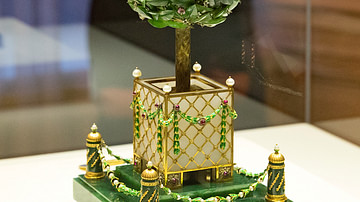
Image
Orange Tree Egg by Fabergé
The 1911 Orange Tree Egg by Peter Carl Fabergé (1846-1920). The egg was given by Tsar Nicholas II (r. 1894-1917) to his mother the Dowager Empress Marie Feodorovna. The egg is made of nephrite, white quartz, gold, and enamel. It is set with...
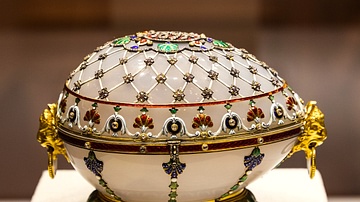
Image
Renaissance Egg by Fabergé
The 1894 Renaissance Egg by Peter Carl Fabergé (1846-1920). The egg was given by Tsar Alexander III (r. 1881-1894) to his wife Marie Feodorovna. The egg is made of opaque agate with enameled gold mounts. The egg measures 13.5 cm (5.3 in...
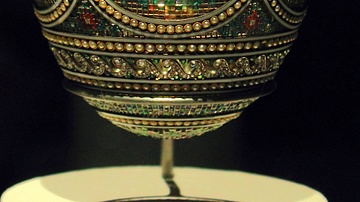
Image
Mosaic Egg by Fabergé
The 1914 Mosaic Egg by Peter Carl Fabergé (1846-1920). The egg was given by Tsar Nicholas II (r. 1894-1917) to his wife Alexandra Feodorovna. The egg is made of platinum set with a mosaic design of flowers. The pieces of the mosaic are diamonds...
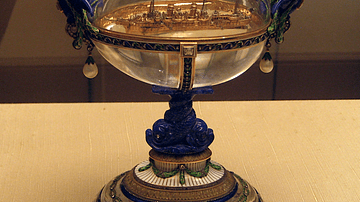
Image
Standart Egg by Fabergé
The 1909 Standart Egg by Peter Carl Fabergé (1846-1920). The egg was given by Tsar Nicholas II (r. 1894-1917) to his wife Alexandra Feodorovna. The egg is made of rock crystal with a gold mount. The foot of the egg is formed from two dolphins...

Image
Grisaille Egg by Fabergé
The 1914 Grisaille Egg by Peter Carl Fabergé (1846-1920). The egg was given by Tsar Nicholas II (r. 1894-1917) to his mother the Dowager Empress Marie Feodorovna. The egg is made of gold and has eight panels in grisaille and translucent pink...
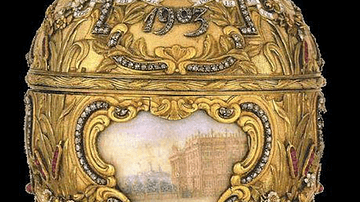
Image
Peter the Great Egg by Fabergé
The 1903 Peter the Great Egg by Peter Carl Fabergé (1846-1920). The egg was given by Tsar Nicholas II (r. 1894-1917) to his wife Alexandra Feodorovna. The egg commemorates the bicentenary of the founding of St. Petersburg by Peter the Great...